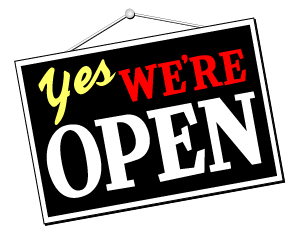Every few years, our friends in the local media descend upon cities in the Phoenix metropolitan area asking for records pertaining to our purchase of what they usually term as “trinkets” or “chachkis.” Typically, they approach the story from the angle of government waste or the misuse of taxpayer dollars.
Nothing could be further from the truth.
Chandler, Ariz., is a suburb of Phoenix. Through most of the 1990s and into the 21st century, it has been among the fastest-growing cities in the country. Now, with a population of about a quarter-million, Chandler is a city that has developed as a great place for families. It is balanced with a strong, sustainable economy backed by many large employers including Intel, Verizon Wireless and Countrywide Financial.
With the rapid growth the city has experienced, we in municipal government face a major challenge in educating newer residents about the many programs and services we have available. Chandler also faces a second test that is fairly unique: The city has portions of five school districts within its borders. Some of those districts carry the names of our neighboring cities, making it increasingly difficult for parents to differentiate between their city and their children’s educational provider. In dealing with all of this confusion, the use of city-logoed items has become a very effective tool in our communication efforts and, equally important, in our brand identification.
Chandler’s city organization is divided into more than a dozen departments. Each works fairly independently to market its own municipal function, and most utilize some type of logo product.
“Offering promotional items that are made of recycled-content materials demonstrates the value and importance of reducing, reusing and recycling waste – our key recycling message,” reports Sheree Sepulveda, Chandler’s environmental programs education coordinator. “Our recycling programs are voluntary, and generally, the public is quite surprised to see the results of the ‘fruits of their labor’ as it relates to recycling at home or in the office.”
Both the police and fire departments use a number of promotional items, mainly geared toward children and focused on safety. Among the more popular items are cards, similar to baseball cards, which feature various units such as the SWAT team or apparatus such as a fire truck.
“We only have one chance to make a good impression,” acknowledges Fire Battalion Chief Dan Couch, who oversees the fire department’s public affairs and community education office. “If we really impress our customers, they might remember that they like us; but if we send something with them that they want to keep, they will have our name and our message with them long after that first impression.”
The communications and public affairs department has drafted very specific logo standards to ensure the brand is not compromised, so distributors dealing with municipalities will likely have to deal with strict guidelines. Other popular city-logoed items include pencils holders in the shape of the city’s recycling bins, pens shaped like traffic signals, mugs, shirts, hats and even paper clips. The city Web site, www.chandleraz.gov, is commonly printed on items, when space permits.
The city has also created its own logo retail outlet: The Chandler Store. Merchandise in the store – located in the main library branch – is available for city executives to use as “welcome” or “thank you” items for dignitaries, as promotional items at municipal-related meetings or conventions, or as employee-recognition awards. Items may also be purchased by employees and the public.
Cities in the region are also known for cooperative efforts that save both money and resources. Several joint partnerships have been formed to lead public-education efforts in areas such as water conservation (for example, the “Water. Use it wisely” campaign) and initiatives regarding the proper disposal of trash (“Bag and tie”). These efforts allow the participating agencies to purchase logo items in bulk for distribution in their individual cities as well as at regional gatherings, such as festivals and sporting events. Combined with print and electronic media buys, these items have proved to be very popular and successful in promoting issues and educational efforts.
Chandler does not spend a large percent of its budget on logo items, and the amounts can vary widely among departments. This does not mean that the city does not spend much on promotional items. On an annual basis, the city budgets approximately $50,000 to $75,000 for promotional products, out of a budget of just more than $1 billion. But even this small percentage brings great returns.
“(At events), promotional items are a huge draw to our information tables and booths, and many times make the difference between having 50 or 100 visitors,” acknowledges Stefanie Garcia, an administrator with the city’s office of neighborhood programs. “I’ve also found that utilizing day-to-day promotional items, such as can openers and pens, forces your name to be seen a thousand-plus times. That is a worthwhile investment!”
This article was written by Dave Bigos for Corporate Logo Magazine. Reprinted with permission.
A former newspaper editor, Dave Bigos has worked in the city of Chandler’s communications and public affairs department for more than 14 years as a public information officer. He currently serves as the assistant to the mayor and council.
Local Government's Promotional Needs.
- Published By Corporate Logo
- Posted in BigPromotions.net, Ideas
Share on Facebook
Tweet This
Post on LinkedIn


